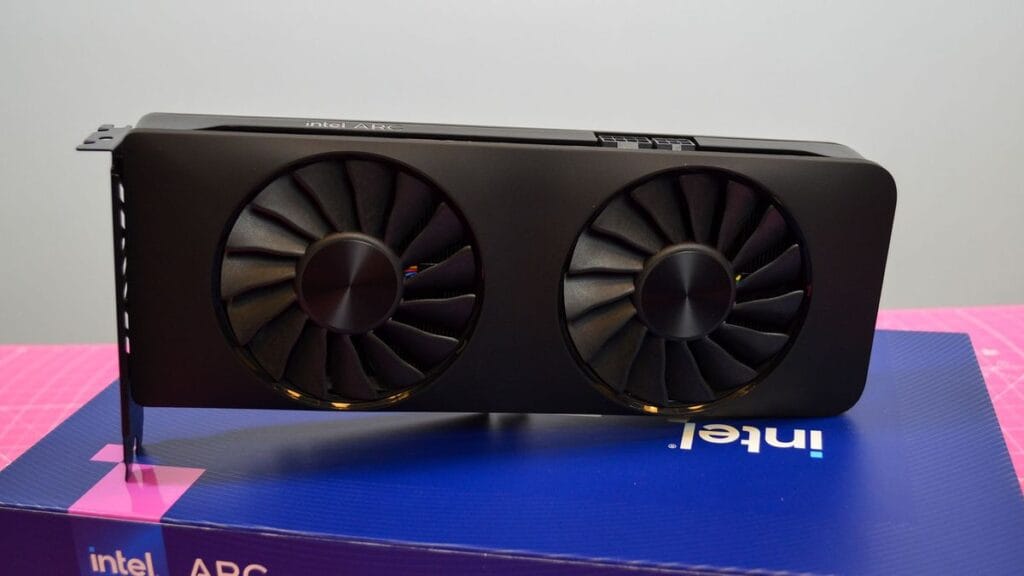- Intel has revealed XeSS 2 which follows in the footsteps of DLSS
- It’s split into XeSS Frame Generation and XeSS Super Resolution
- There’s also Xe Low Latency to combat input lag, much like Nvidia Reflex
Intel has just unveiled new Battlemage desktop GPUs, and alongside those graphics cards comes a fresh version of XeSS, its upscaling tech to rival Nvidia DLSS and AMD FSR.
Yes, XeSS 2 is here, and Intel is making some big changes with the technology in this sequel. In fact, XeSS 2 is being split into two core components: XeSS Frame Generation and XeSS Super Resolution.
In other words, this is going the same route as Nvidia, when with DLSS 3, Team Green brought in frame generation – which means artificially inserting extra frames into the game, to make it smoother. It’s a separate technology to the actual upscaling component of DLSS 3, and so this is what Intel has done – split XeSS into Super Resolution (upscaling) and Frame Generation (extra frames generated to bolster the frame rate).
On top of that, Intel is introducing Xe Low Latency, which is essentially equivalent to Nvidia Reflex – a complementary tech to reduce input lag which helps to smooth over the lag wrinkles that are a side effect of frame generation.
In terms of support, only Intel’s Alchemist and Battlemage GPUs will get XeSS 2 – not any third-party GPUs – and on the games side, developers will need to code in support for all these new technologies (including frame generation, and low latency). However, we’ve also seen mentions of manually enabling low latency (at the driver level), so we’ll have to see how that shakes out.
On top of this, Intel has deployed a new control panel for its Arc GPUs which will simply be called ‘Intel Graphics Software’ (in much the same vein as Team Green’s new and renamed Nvidia App).
This is billed as an ‘all-in-one hub’ for all your Arc GPU needs, from updating drivers to game optimization, enabling Intel’s tech such as low latency mode, changing display options, monitoring performance (frame rates and GPU status), along with controls for overclocking.
{ window.reliablePageLoad.then(() => { var componentContainer = document.querySelector(“#slice-container-newsletterForm-articleInbodyContent-7x9uwq6VN9mK5TQ4icjQAX”); if (componentContainer) { var data = {“layout”:”inbodyContent”,”header”:”Get the best Black Friday deals direct to your inbox, plus news, reviews, and more.”,”tagline”:”Sign up to be the first to know about unmissable Black Friday deals on top tech, plus get all your favorite TechRadar content.”,”formFooterText”:”By submitting your information you agree to the Terms & Conditions and Privacy Policy and are aged 16 or over.”,”successMessage”:{“body”:”Thank you for signing up. You will receive a confirmation email shortly.”},”failureMessage”:”There was a problem. Please refresh the page and try again.”,”method”:”POST”,”inputs”:[{“type”:”hidden”,”name”:”NAME”},{“type”:”email”,”name”:”MAIL”,”placeholder”:”Your Email Address”,”required”:true},{“type”:”hidden”,”name”:”NEWSLETTER_CODE”,”value”:”XTR-D”},{“type”:”hidden”,”name”:”LANG”,”value”:”EN”},{“type”:”hidden”,”name”:”SOURCE”,”value”:”60″},{“type”:”hidden”,”name”:”COUNTRY”},{“type”:”checkbox”,”name”:”CONTACT_OTHER_BRANDS”,”label”:{“text”:”Contact me with news and offers from other Future brands”}},{“type”:”checkbox”,”name”:”CONTACT_PARTNERS”,”label”:{“text”:”Receive email from us on behalf of our trusted partners or sponsors”}},{“type”:”submit”,”value”:”Sign me up”,”required”:true}],”endpoint”:”https://newsletter-subscribe.futureplc.com/v2/submission/submit”,”analytics”:[{“analyticsType”:”widgetViewed”}],”ariaLabels”:{}}; var triggerHydrate = function() { window.sliceComponents.newsletterForm.hydrate(data, componentContainer); } if (window.lazyObserveElement) { window.lazyObserveElement(componentContainer, triggerHydrate); } else { triggerHydrate(); } } }).catch(err => console.error(‘%c FTE ‘,’background: #9306F9; color: #ffffff’,’Hydration Script has failed for newsletterForm-articleInbodyContent-7x9uwq6VN9mK5TQ4icjQAX Slice’, err)); }).catch(err => console.error(‘%c FTE ‘,’background: #9306F9; color: #ffffff’,’Externals script failed to load’, err)); ]]>
Sign up to be the first to know about unmissable Black Friday deals on top tech, plus get all your favorite TechRadar content.
Hat tip to VideoCardz for picking up on both of these developments.

(Image credit: Intel)
Analysis: Keeping pace with upscaling – the future of gaming
There are some major changes here, as we noted at the outset, and aside from all the new tech – implemented very much along the lines of DLSS – there’s also that switch in support for GPUs. Previously XeSS allowed AMD and Nvidia GPUs (or some of them) to use and benefit from the tech, but that’s no longer the case due to frame generation requiring Intel’s own hardware (XMX AI Engines).
Team Blue might work around that in the future, but for now, XeSS 2 will be for Intel Arc graphics cards only.
It’s not really surprising to see Intel moving in the same direction as Nvidia – after all, DLSS is very much regarded as the killer solution for boosting frame rates. What’s good to see with Team Blue is that XeSS 2 also allows for frame generation with older Alchemist graphics cards, whereas with DLSS 3, only RTX 4000 – the very newest Nvidia GPUs – get the frame generation component. (RTX 3000 graphics cards support everything else in DLSS 3, to be fair, including ray reconstruction – but not frame generation).
If Intel is to stay competitive in the GPU space, it’s certainly important that it keeps XeSS up to speed, as upscaling is regarded as a core piece of the future of gaming. More and more games are relying on such technology to achieve smooth frame rates, particularly at the likes of 4K resolution (or its upscaled equivalent, we should say).
We’re seeing upscaling become a key part of consoles – witness the PlayStation Pro 5 with PSSR – and on PCs, what’ll make it even more prevalent is Microsoft’s move with DirectSR, an effort to make it much easier for game developers to use XeSS, DLSS and FSR in their games.




